Recovering Lost Sales: 10 Shopping Cart Abandonment Solutions
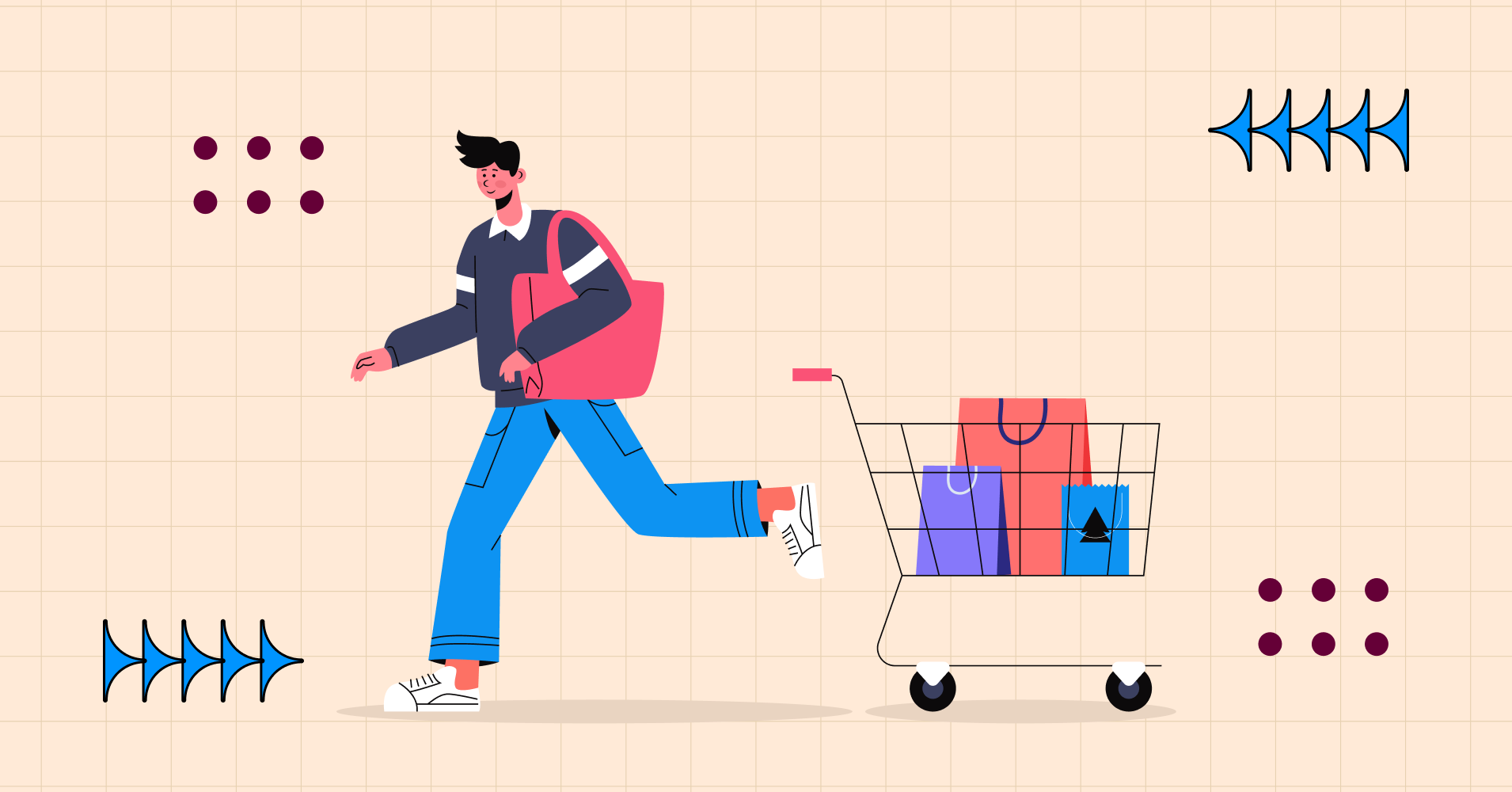
We’ve all been there—curling up on the couch, binge-watching our favorite TV shows, and enjoying some window shopping. It’s our guilty pleasure. But have you noticed how often this browsing ends without a purchase?
This scenario is all too common and is known as shopping cart abandonment. It’s a challenge that many e-commerce sites face, but it’s not hopeless. This blog will explore the reasons behind shopping cart abandonment and provide practical strategies to recover those lost sales by reducing the cart abandonment rate.
What is shopping cart abandonment?
Imagine this: a potential customer has been eyeing your product for weeks. Your web analytics show repeated visits to the same product page.
The moment of truth arrives as they finally select their specifications and add the product to their cart. But then, unexpectedly disappear halfway through the checkout process—leaving you puzzled.
You’re not alone in this. Shopping cart abandonment is a common issue that plagues many e-commerce sites. But why do shoppers leave without completing their purchase? Several factors contribute to this phenomenon, including unexpected shipping costs, complicated checkout processes, and many more you need to look into.
Shopping cart abandonment statistics
Being ghosted is not an uncommon thing now. Likewise, cart abandonment is a frustrating matter in question. According to the Baymard Institute, a staggering 69.82% of online shopping are abandoned cart.
This means that 7 out of every 10 shoppers leave without completing the checkout and transaction process. Due to cart abandonment, E-commerce businesses miss out on $18 billion in potential sales each year.
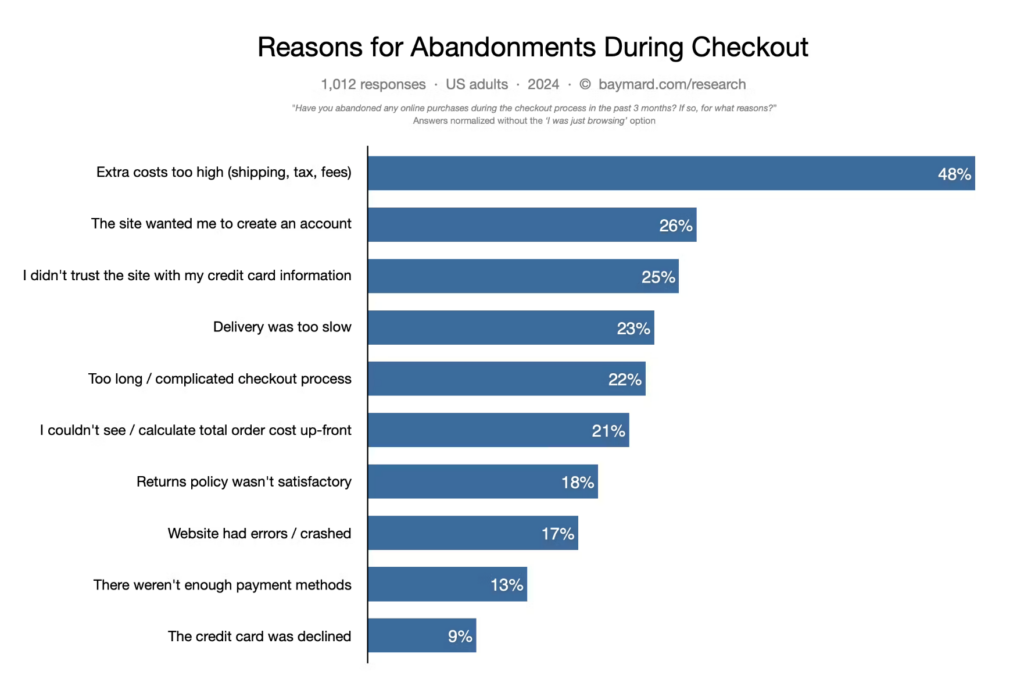
Tracking these stats using shopping cart abandonment tools helps diagnose ‘what went wrong’. E-commerce sites must keep tabs on what ultimately your store and products bring in at the end. For instance, a high abandonment rate could signal a poor user experience or a broken sales funnel.
Another study found that 58.6% of US online shoppers have abandoned a cart in the last three months because “I was just browsing/not ready to buy.” Most abandon their carts before starting the checkout process.
However, cart abandonment due to issues encountered during the shopping experience is preventable. By identifying and addressing these friction points, you can recover lost sales and improve the shopping experience.
Understanding the ‘Why’ behind cart abandonment
Before you tackle the problem, you need to understand the ‘why.’ Here statistics and proven data are your friends. Also by analyzing customer behavior, you can identify patterns that lead to abandonment.
Maybe your checkout process is too lengthy, or the shipping costs are a deal-breaker for many. The reasons vary, but common threads weave through the data.
Here’s a list of reasons why people abandon carts.
- Complicated and lengthy checkout process
- An account is required
- The website had errors/crashed/unresponsive
- Other major website performance issues
- Not trustworthy enough to enter credit card information
- Limited payment method
- Unclear pricing
- Unable to see or calculate total order cost upfront
- Extra costs (like shipping, taxes, and fees) are too high
- Lengthy delivery time
- Unsatisfactory return and refund policy
- Credit card declined
- Not enough product information
- The site is not mobile-friendly
How do we reduce shopping cart abandonment and close sales?
Now in all fairness to the eCommerce industry, a large portion of cart abandonments are simply a natural consequence of how users browse e-commerce sites.
Many users will be doing window shopping, price comparison, saving items for later, exploring coupons, BOGO, discount products, or consulting with friends/family, etc. These are largely unavoidable reasons behind abandoned cart.
How to handle it? By understanding customer psychology, precisely targeting your customer base, attracting customers with specific offers, and retaining them.
Reducing shopping cart abandonment leads directly to more sales and revenue, so today’s core focus is to optimize the checkout process.
Just like with conversion rate optimization, many factors can influence your shopping cart abandonment rate.
Offering value to window shoppers
Some of your website visitors are “Lookers” who are just browsing.
Lookers add items to their cart to create wish lists or save items for later, not necessarily to buy or start with actual purchase intent. This behavior is often due to impulsive window shopping, especially during peak times like Black Friday and holiday sales in December, leading to higher cart abandonment rates.
While this isn’t exactly a problem, still there are ways to entice them to return the items they’ve saved and you can recover abandoned cart. Try offering value-added services for instance. Here you can apply strategies also focusing on cart recovery.
Here are some steps you can take:
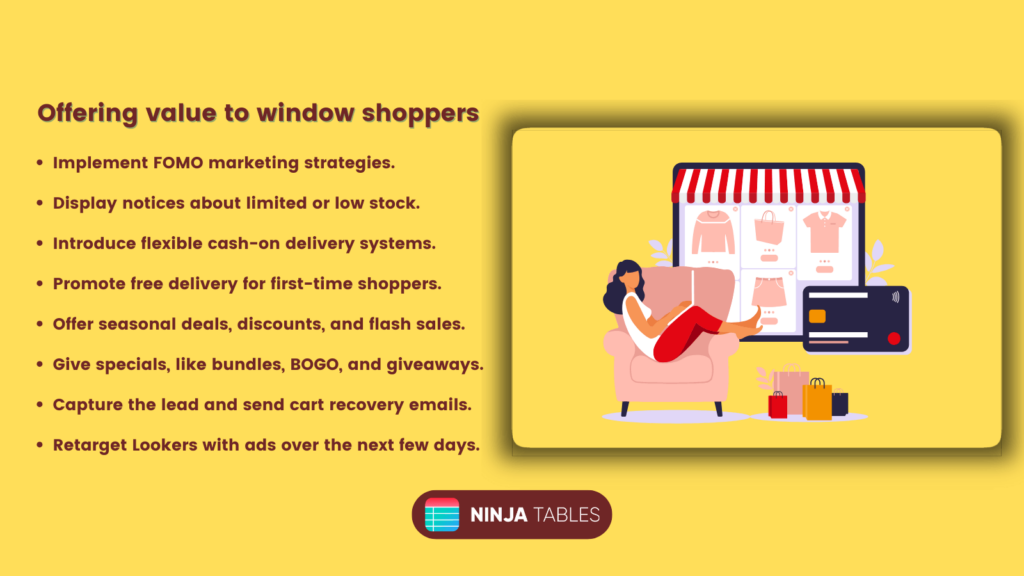
Streamlining checkout process
Ensuring easy navigation for customers significantly increases the likelihood of their return.
Make your page simple and intuitive with visible buttons, and clear CTAs. Customers want to complete their transactions quickly and efficiently, without having to jump through a lot of hoops.
A smooth, quick checkout process with minimal steps reduces cart abandonment rate, ensuring customers can complete purchases effortlessly.
Be transparent about costs
No one likes surprises or hidden costs. Ensure all costs, including shipping and taxes, are clear from the get-go.
Don’t add any hidden cost, be transparent if extra customization charges are added later in the checkout process. Show the cost breakdown once they’re on the order confirmation page. This ensures that customers are not caught off guard by hidden costs and it reduces the likelihood of cart abandonment.
Offer multiple payment options
The more ways customers can pay, the better.
Include popular payment gateways such as PayPal, Stripe, or credit card processors. So, you can make it convenient for customers to complete their purchases using their preferred method, increasing the possibility of conversion.
Reduce concerns about payment security
Guaranteeing payment security is crucial for building trust and reducing cart abandonment. When customers have concerns about the safety of their payment information, they may hesitate to proceed with their purchases and abandon their carts. Avoid risks of unauthorized access, data breaches, and fraud.
Use a secure, trusted payment system and display security badges and SSL certificates. Visual indicators such as secure payment icons, and recognized security certifications reassure customers that their data is protected.
Reassure your customers
The authenticity of your products can be a concern for some customers, especially first-time shoppers. They often look for reviews and positive feedback to feel confident in their purchase. Don’t make them search for it—display reviews to paint a positive and reassuring picture of your brand.
No visible reviews can lead to cart abandonment, so promptly show customer feedback, highlight bestsellers, and emphasize social proof.
What if you can incorporate some of your top product reviews next to your products?
Check out this stunning design example in action.
GSMArena | |||
AT & T | |||
Trustpilot | |||
Techradar | |||
Pros
| Cons
| ||
Courtesy of Ninja Tables free table template
| Why not give the free table templates of Ninja Tables a try in your digital storefront today? Just download the zip file, import JSON, customize, and embed effortlessly. |
Improve user experience for customers
Product alone can not make up for a poor user experience or navigation system on your digital storefront. Just like in brick-and-mortar stores, if customers can’t easily navigate the aisles, find products on shelves, or receive helpful service, sales will suffer.
Online, you must compensate in other ways.
Try giving your customers the ease of browsing. Use dynamic product tables, like Ninja Tables, to organize and display products effectively. Ninja Tables offers custom designs, filtering, sorting, pagination, and search fields, creating a responsive, user-friendly display for all screen types without any coding skills.
Take some major preventive majors to improve the user experience:
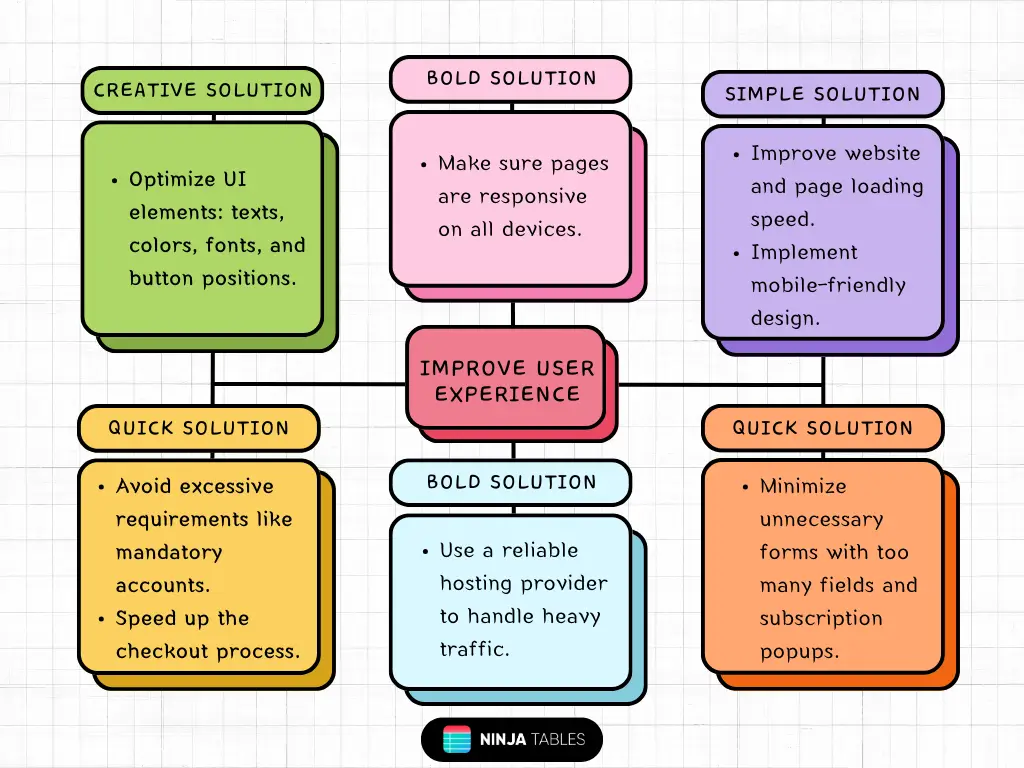
Lower shipping charge and flexible return policy
Shipping charges significantly impact buyer behavior. Offer free or discounted shipping, especially during seasonal promotions. Options for shipping, not necessarily a new trend, have been going around for a while. Provide various shipping options, such as:
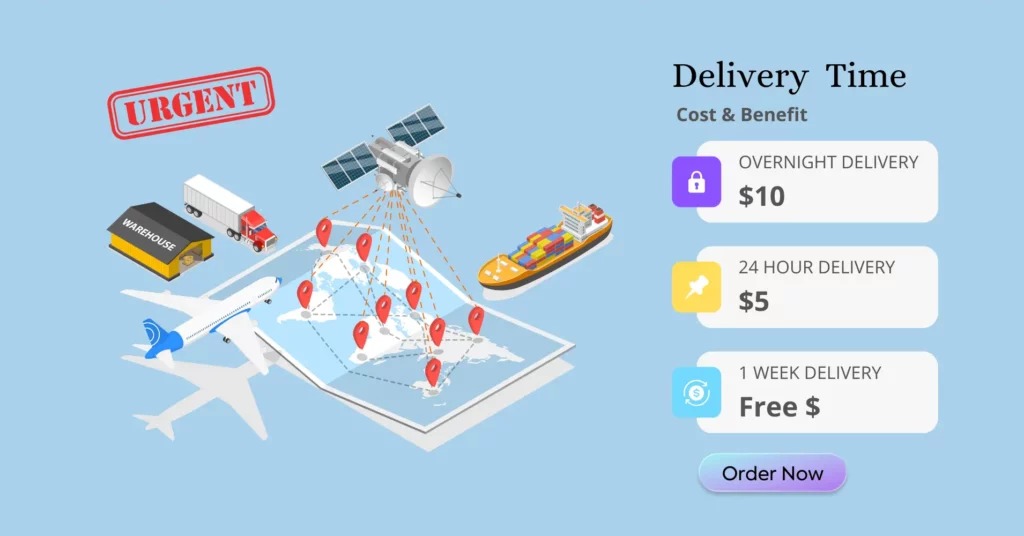
Clearly stating estimated dates for delivery works like a charm and provides great convenience. Try giving enough flexibility for a satisfactory return policy, so new customers can rest assured. Also, it gives the customers enough freedom to choose what works best for them, which ultimately reduces return rates.
Use action-oriented CTA during checkout
Persuasive CTAs are crucial, especially during checkout. Use clear, action-oriented messages. Button placement can significantly impact sales and improve user experience. Simplify user journeys by minimizing redirects and keeping final steps straightforward and on a single page. Avoid creating distractions by reducing unnecessary page jumps.
Offer one-click checkout
As we mentioned earlier, 22% of cart abandonments occur due to a complicated checkout process. Improving the checkout design can boost conversion rates. One-click checkout alone has been shown to increase conversions by 35%.
For first-time buyers, make the checkout process irresistible by offering trust, great incentives, discounts, and flexible delivery options. Once they’re hooked and make that first purchase, save their info. So, they can breeze through the checkout with just a tap on the next visit.
Understanding user behavior to lower cart abandonment rate
Understanding user behavior is key to reducing cart abandonment. It helps you identify and address the issues that lead customers to leave halfway through purchases. Ultimately helps to recover abandoned cart in the process.
Here’s how to know:
- Track User Interactions: Use tools like Google Analytics, heatmaps, and session recordings to monitor site navigation. Identify where users spend time and where they drop off.
- Gather Customer Feedback: Collect feedback through surveys, reviews, and customer service to pinpoint common issues and areas of satisfaction.
- Conduct A/B Testing: Test different versions of website elements (buttons, layouts, forms) to determine which improves user engagement and conversions. Don’t just disbelieve it right off the bat, test it out.
Conclusion
Cart abandonment is a common challenge for online retailers. More than half of shoppers add products to their carts but end up leaving halfway through purchase. The reasons vary, but complicated checkout processes, unclear pricing, and high shipping costs are huge factors in why a shopper decides to exit.
The good news? Well, it can be prevented. Use these technical and marketing tips to combat cart abandonment.
If we focus on checkout usability issues alone, an e-commerce site can gain a 35.26% increase in conversion rate through better checkout design. Now, getting such wins won’t come easy. But all solutions mentioned above are worthwhile; lost orders can be recovered solely through a streamlined checkout & design.
Pay attention and effort into understanding user behavior, and pinpoint who you’re serving behind every click. So you can provide the highest value to customers and; what’s best for your customer brings the best for your business.

Ninja Tables– Easiest Table Plugin in WordPress





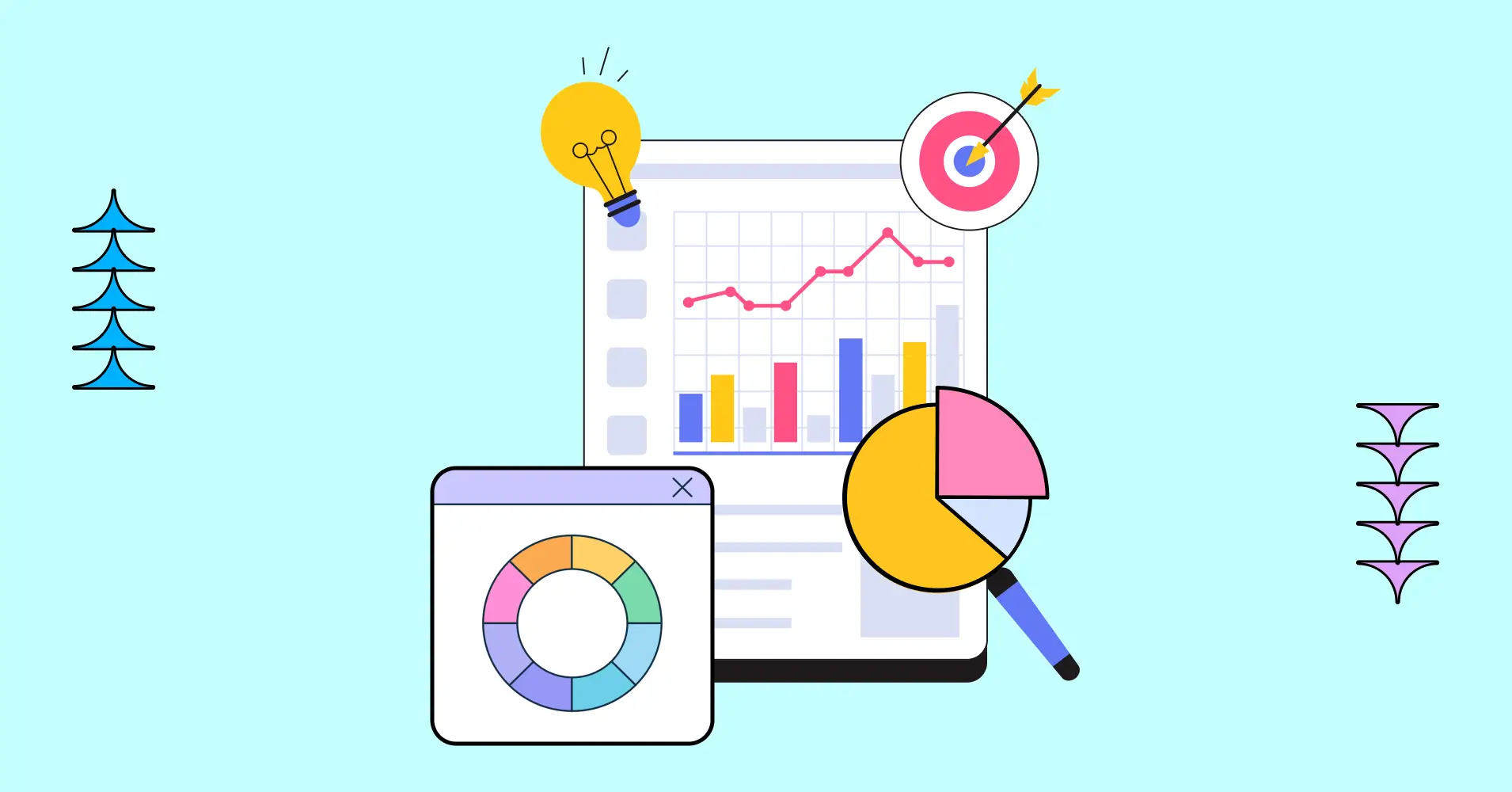
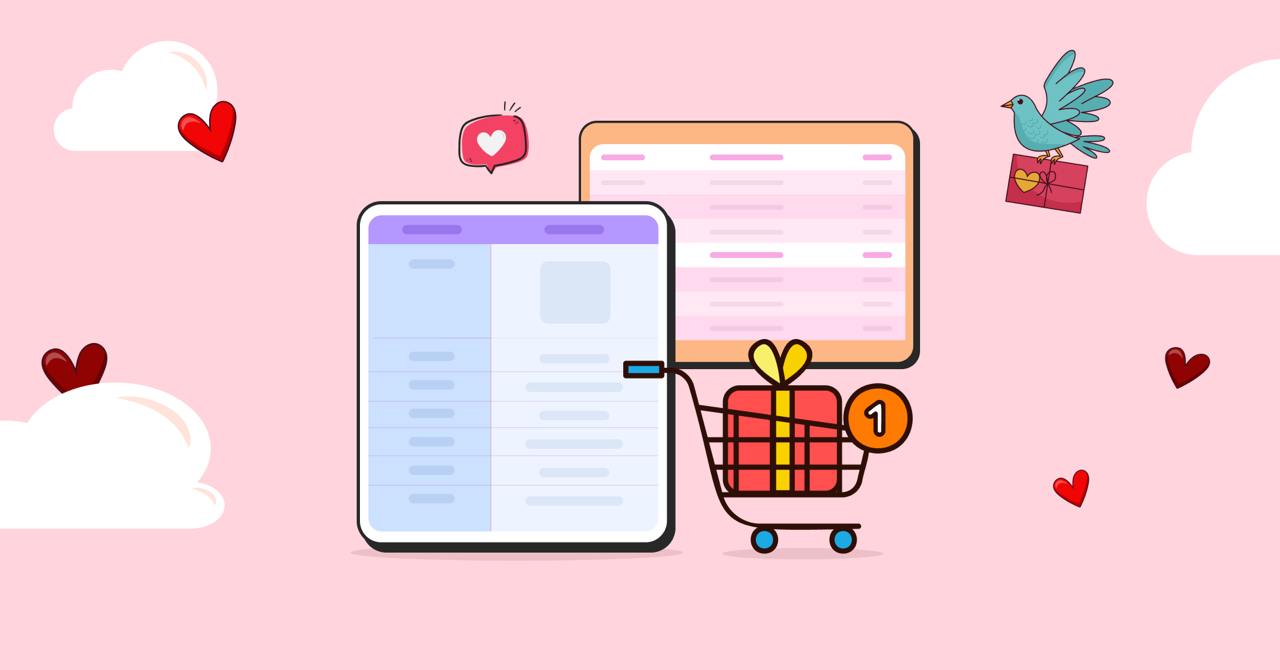
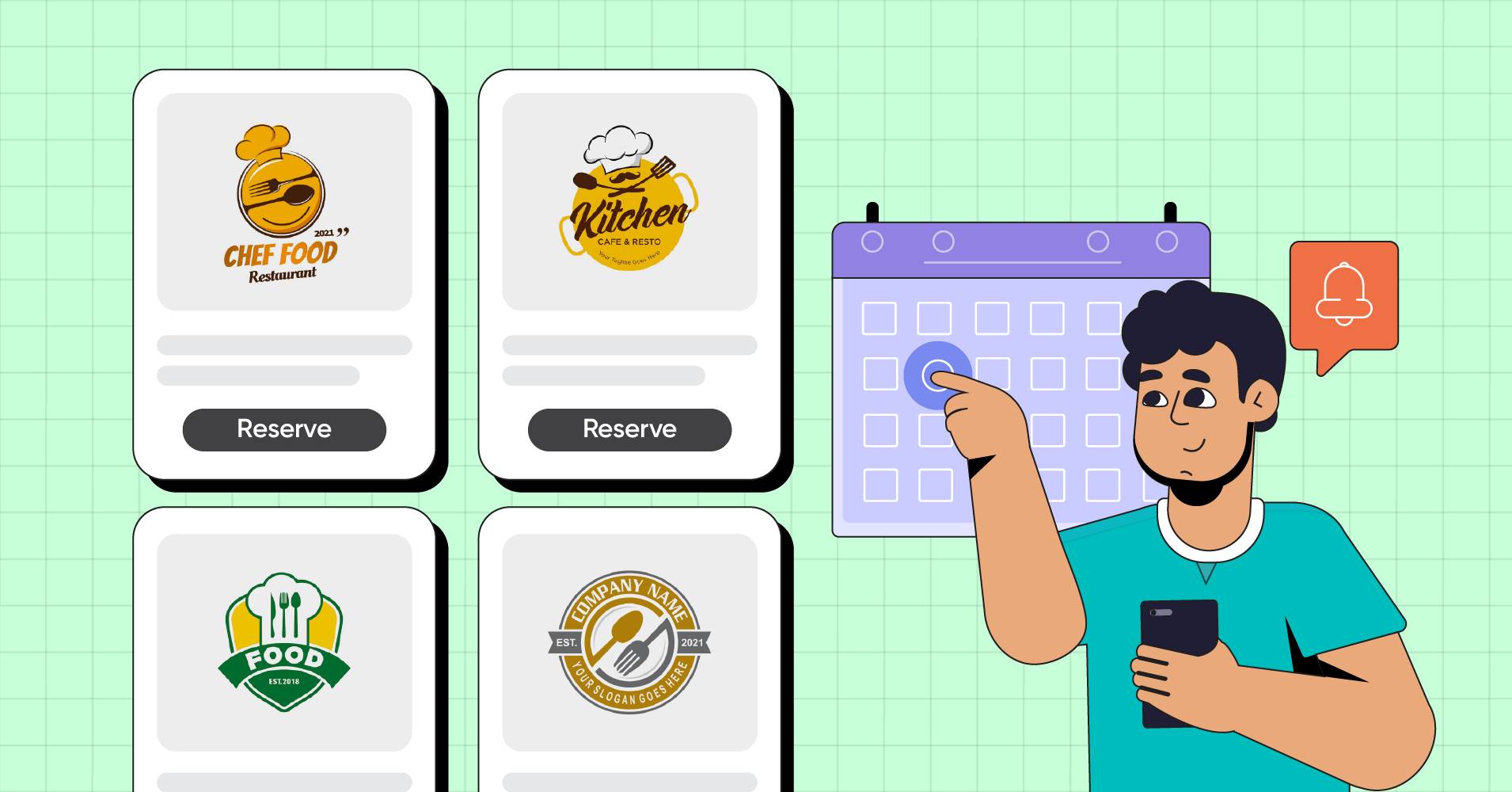
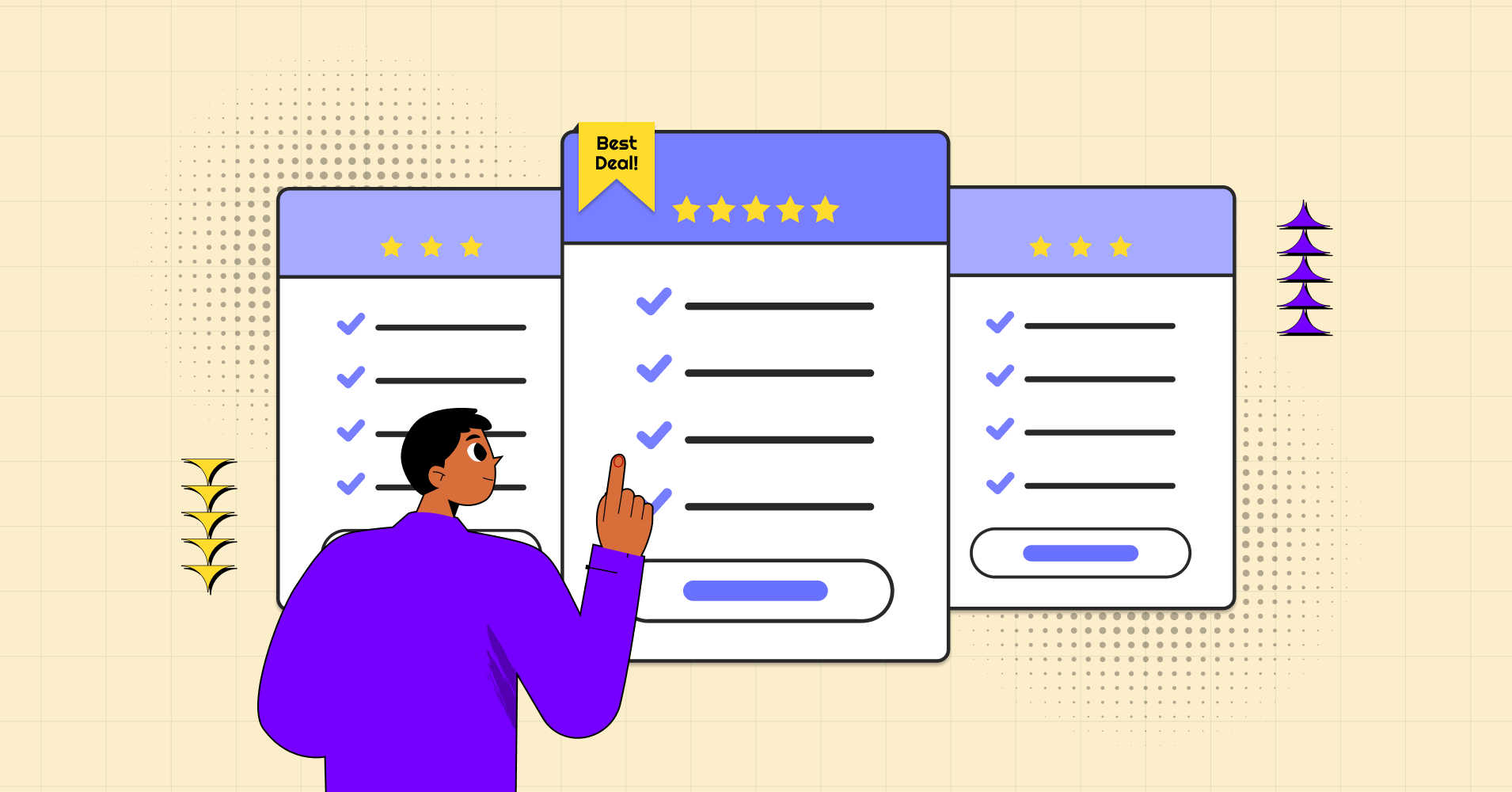
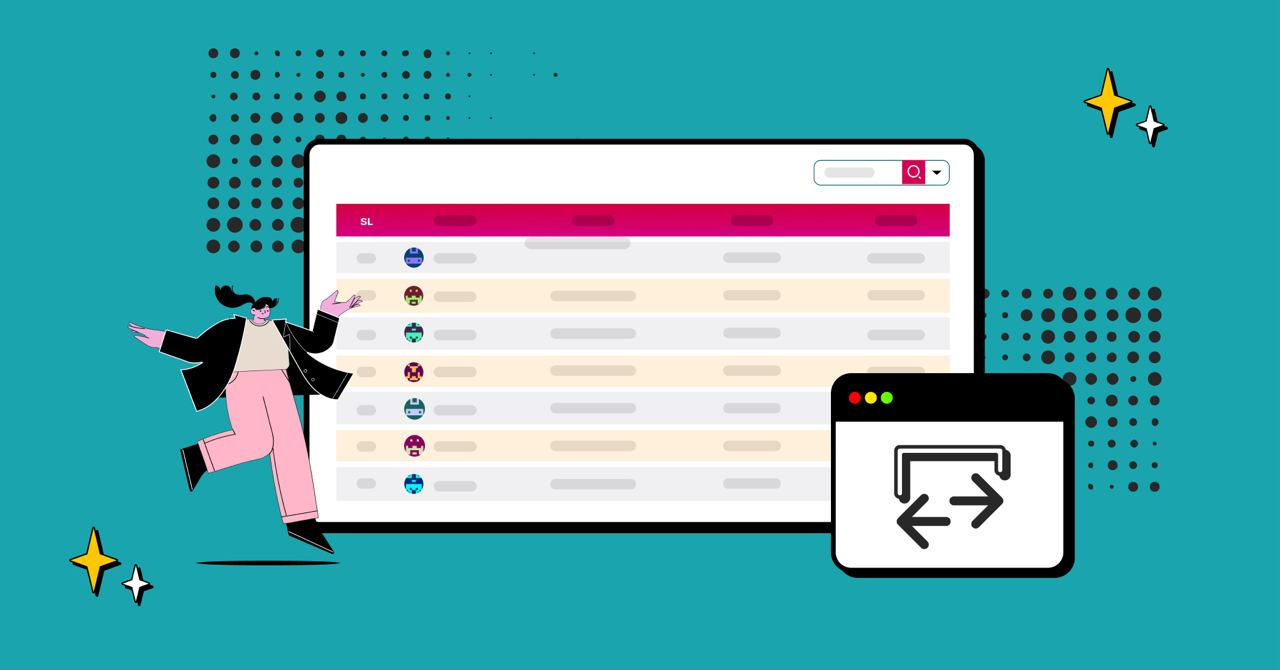
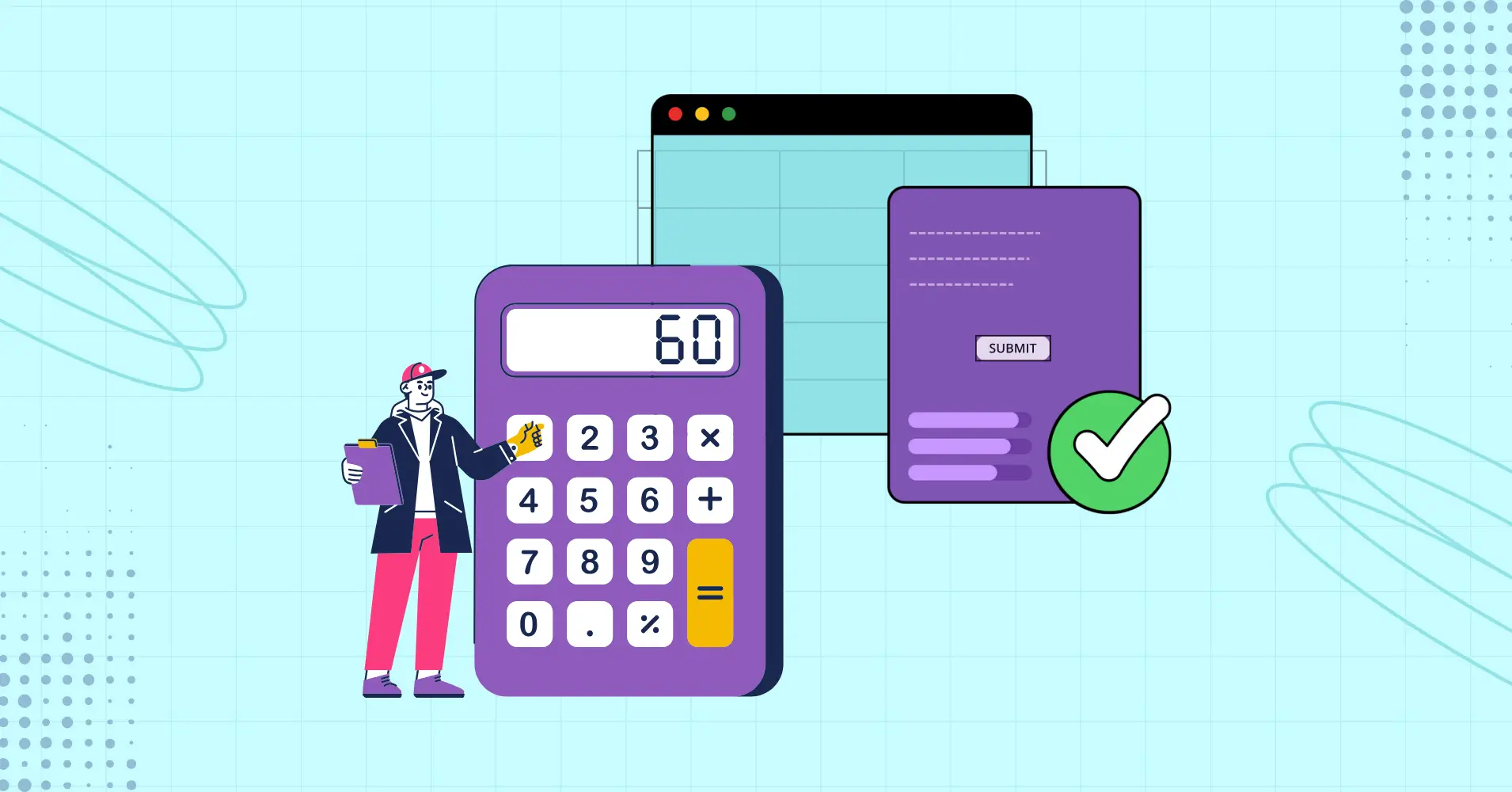
Add your first comment to this post